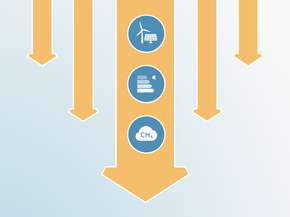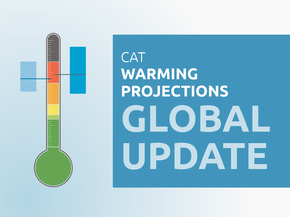Assumptions
Historical emissions
Historical emissions are taken from UNFCCC (2016) for 1994, 2000 and 2010. The 2007 data point was obtained from the Second National Communication (Government of India, 2012). Between these data points trend interpolation was performed. Before 1994, trend extrapolation was performed to complete the series from 1990–2010. From 2011 to 2014, a combination of different sources was used to complete the emissions trajectory excluding LULUCF. Energy-related CO2 emissions were obtained from IEA Energy Statistics and Balances (IEA, 2017b), non-CO2 emissions were based on US EPA projections and other CO2 emissions were based on extrapolations using historical data from UNFCCC and growth rates for cement production from IEA (IEA & WBCSD, 2013).
Pledges
Existing policies and measures are described in detail in India’s NDC. However, the description of the targets is very brief. India could increase the transparency of its NDC by describing the greenhouse gases, sectoral coverage and metric for the intensity target (e.g. constant or nominal GDP), as well as the way it envisages achieving the non-fossil power capacity target.
For consistency with the current policy projections, the intensity targets for 2020 and 2030 are quantified based on GDP assumptions from the World Energy Outlook (IEA, 2017a). GDP is assumed to grow by on average 7.7% in the period 2017–2025, and 5.7% in the period 2020–2030. These GDP growth projections are used for both the targets and current policy projections (IEA, 2017a). The Indian Government aimed for higher GDP growth of around 8% per year in its 12th Five Year Plan (Government of India, 2013) and NDC (Government of India, 2015b), but has not yet been able to achieve its aspirations.
The 2020 pledge to reduce the emissions intensity of GDP by 20% to 25% below 2005 by 2020 excluded agriculture. We assumed this is also the case for the 2030 target, even though it is not mentioned in the NDC. The emissions level resulting from this target would be 5.4–5.6 GtCO2e by 2030. These emissions are 501–518% above 1990 emissions level excluding LULUCF. If agriculture were to be included, the resulting emissions level would be 10% higher (5.9–6.0 GtCO2e).
For the lower end of the current policy pathway, 47% non-fossil power generation capacity can be achieved in 2030. If no additional deployment of solar is assumed after 2022 then 46.6% non-fossil capacity is achieved. As these pathways already overachieve the 40% non-fossil capacity target, we use the lower bound of current policy to analyse two ways of meeting the 40% non-fossil capacity: 1) by reducing the share of solar power, and 2) by reducing the share of nuclear power. Based on these two scenarios, emissions would be 117–195 MtCO2e above the upper end of the current policy pathway.
Current policy projections
Current policy projections are based on the World Energy Outlook 2017 Current Policy Scenario for CO2 emissions from fuel combustion combined with the US EPA non-CO2 emissions projections until 2030 (US EPA, 2012) and extrapolation of other CO2 emissions based on cement projections from the IEA and World Business Council for Sustainable Development (IEA & WBCSD, 2013). The increased renewable energy target for 2022, which are not included in the World Energy Outlook 2017 Current Policy Scenario, was additionally quantified and included in our current policy projection. A scenario range was developed with the higher end indicating a less ambitious deployment of renewables after the target year (2022) whereas the lower end considers a continuation of the renewables deployment trend after 2022. The increased renewable energy deployment is expected to result in emissions savings of 15 MtCO2e beyond the World Energy Outlook Current Policy Scenario in 2030.
Planned policy projections are also based on the World Energy Outlook 2017 Current Policy Scenario with power sector emissions adjusted as per the Draft Electricity Plan. The projected installed capacities for 2022 and 2027 from the Draft Electricity Plan are used to estimate the average annual installed capacity additions between 2015 and 2027.
The average annual capacity additions from different sources of generation are estimated under the assumption that no new coal and gas power plants are installed after 2022. With average annual installed capacities, total installed capacity for 2030 is projected. Installed capacities serve as a basis to calculate the electricity generation and the corresponding emissions from the power sector using the generation factors (i.e. gCO2/kWh) from the WEO 2017.
With CAT calculations, the power sector emissions for the years 2022 and 2027 are higher compared to the estimates from the Draft Electricity Plan. The discrepancy is due to the use of different emission factors: the Draft Plan uses an average CO2 emission factor while the CAT uses higher emission factors based on WEO 2017. We used emission factors from the WEO 2017 because it forms the basis of our current policy projections. The difference in power sector emissions from the Draft Plan and the Current Policy Scenario is used to derive emission trajectory for the planned policy pathway.
Further analysis
Latest publications
Stay informed
Subscribe to our newsletter




